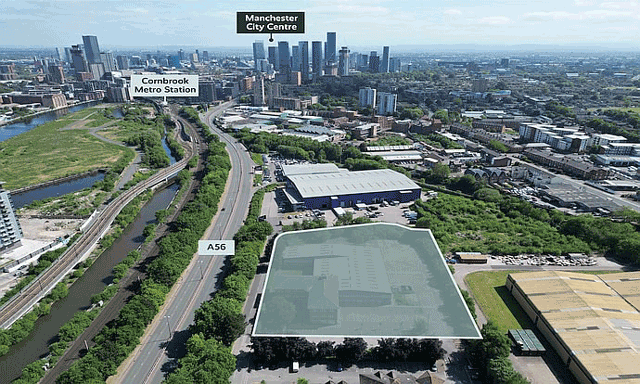Has Cardiff Council left the back door open to developers? Its local development plan is severely out of date and its housing land is insufficient. That would be enough for many, but a recent landmark decision overturning a key planning refusal for 150 homes in north Cardiff upped the ante, clearing the way for developers to start contesting planning refusals.
In April, Welsh housing minister Carl Sargeant overturned the council’s rejection of a Heron Land Developments application to build 150 homes on the Church Road greenfield site in north Cardiff. Heron argued that Cardiff’s initial refusal was based on a plan that failed to take into account the city’s shortfall in affordable housing. The Welsh government’s decision cited the absence of adequate land and, unusually in such cases, awarded costs against Cardiff Council.
“The decision is political dynamite,” says Gareth Hooper, planning director of planning consultancy DPP and an outspoken critic of the council’s approach. “The Welsh government has issued what can only be called a damning indictment of Cardiff. It shows that if members refuse applications, they are very likely to be successful at appeal. It is very difficult to substantiate refusals for housing sites.”
The old South Glamorgan structure plan was adopted in 1997, a year after Cardiff’s local plan. The authority has a ‘preferred’ local development plan which includes a proposal for 45,400 new homes by 2026, but this will not be adopted until at least late 2015.
There is growing concern that Cardiff’s lack of a development plan and insufficient housing land will lead to piecemeal and opportunistic house building across the city, impacting on much of the rest of South Wales.
Future proposals are controversial because they potentially suggest building on greenfield sites. But behind the scenes, the key argument is whether the lack of a local plan for the next two years or so prevents the council from effectively opposing any development.
“Cardiff’s current plan supports high-density flats while builders and demand show that family houses are needed,” says Hooper. He claims that although local planning authorities are required to demonstrate they have five years’ supply of housing land, Cardiff has only 2.9.
Cardiff Council is, for now, keeping its powder dry. A spokesman says the authority will not make any statement on its plan, specific proposals or any criticisms of its current position until at least early 2014, after it assesses official responses to the development plan’s consultation process.
The council has faced other criticism, too. Mike Rees, a partner at property consultancy Bruton Knowles, describes Cardiff’s current proposals as “isolationist”. He argues that by working with nearby authorities such as the Vale of Glamorgan – another council with an out-of-date plan and insufficient land – there could have been “a dispersal approach” involving smaller numbers of houses but in more locations.
The Vale of Glamorgan scrapped an early version of its local plan in January, but in October it issued a revised plan that will be sent for public consultation in December. The authority has formally identified only 3.3 years’ worth of housing sites, but the new plan states that 10,000 homes may be built by 2026, with the largest volumes at Barry Docks, St Athan, Rhoose and Cowbridge. However, the timetable puts adoption of the plan as early 2017.
Regeneration specialist St Modwen, which is involved in joint venture projects with Persimmon to build 4,000 homes on Newport’s former Llanwern steelworks and another 4,000 at the old BP Port Talbot oil refinery site, admits that councils with ineffective local plans can become easy targets.
“The temptation to seek consent when local authorities have a poor forward land position is inherent in the system,” says Ben Cook, Modwen’s residential director. He believes the Welsh government is putting more pressure on individual councils to modernise their planning briefs and land provision, with positive results.
“This is shown in Neath Port Talbot Council, where the expected build rates will be 610 dwellings per annum with the previous highest being 411 in 2010/11,” says Cook. He now wants the Welsh government to press local authorities to reduce the costs of building regulations and planning gain, which he says threaten the viability of some schemes.
For the moment, however, the Welsh government’s housing priority is to push councils to get plans, land supply and financing (see box) in place.
DPP’s Hooper adds: ”In the meantime, the government’s decision over Heron Land is a marker for other builders to look at sites and put in applications over the next six months.
“Cardiff is reaping the reward for not having effective planning, and the same may apply to other authorities.”
Social housing funding boost
The Welsh government has brokered a deal in which investment house M&G will provide 30-year loans worth £153m to 17 registered social landlords (RSLs), allowing them to build 1,000 homes by late 2015.
Just under £100m will be provided through the Welsh Housing Finance Grant and the rest will be negotiated individually by housing associations. The Welsh government has made available £4m a year, starting in 2013/14, to help RSLs with loan repayments.
So far, schemes approved and using the funding are in Cardiff, Caernarfon, Gwynedd and Blaenau Gwent.
The M&G deal is considered by many smaller RSLs to be more flexible than the bond system – in which minimum borrowing is £5m – that is used by the Welsh government to fund larger-volume social housing building.











